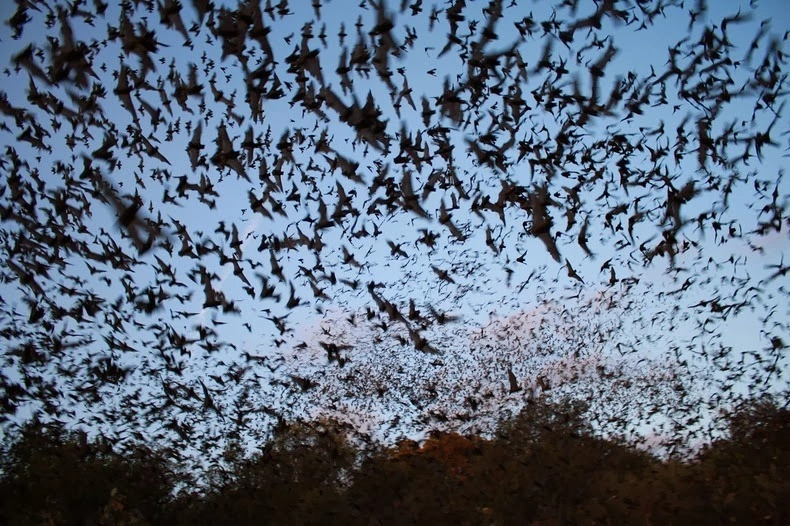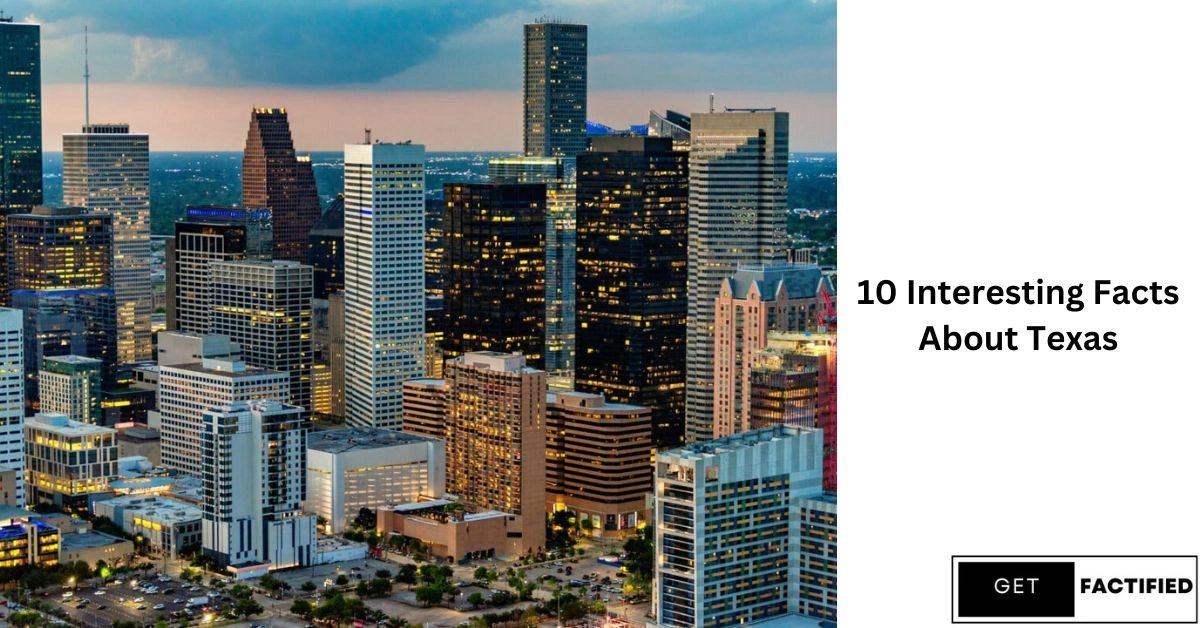Texas, the Lone Star State, is a land of rich history, vibrant culture, and astonishing natural wonders. While many may associate Texas with its iconic cowboy culture and vast oil fields, the state holds numerous intriguing facts waiting to be discovered. From inventions to natural phenomena, here are 10 fascinating Texas facts that will pique your interest and leave you in awe.
Pros
- Variety of Facts: The blog post offers a diverse range of facts about Texas, covering different aspects such as history, geography, culture, and economy, catering to a wide audience.
- Engaging Content: The facts are presented in an engaging and informative manner, making them the most interesting and enjoyable to read for both Texans and non-Texans alike.
- Educational Value: Readers can learn interesting tidbits about Texas, enriching their knowledge and understanding of the state’s significance and contributions.
- Visual Appeal: Incorporating images or multimedia elements related to Texas can enhance the visual appeal of the post and make it more captivating for readers.
Cons
- Organization: The post may benefit from organizing the facts into categories or themes, making it easier for readers to navigate and absorb the information.
- Depth of Information: While the post provides an overview of various Texas facts, it could delve deeper into certain topics to provide more detailed insights and context.
- Sources: Including sources or references for the facts presented can add credibility and transparency to the post, allowing readers to verify the information and explore further if interested.
You can also read about Interesting Research Facts
Dr Pepper’s Birthplace
The Creation in Waco
In 1885, pharmacist Charles Alderton crafted a unique concoction in Waco, Texas, which would later become known as Dr Pepper. This beloved soda was first nationally marketed in 1904 and has since become a global phenomenon. Interestingly, the recipe remains a closely guarded secret, stored in safety deposit boxes across Dallas. Dr Pepper’s distinct flavor, often described as a blend of 23 different flavors, has captivated soda enthusiasts for over a century, making it one of the most iconic and enduring beverages in the world.

The Frozen Margarita Machine
A Texan Innovation
In the heart of Dallas, restaurateur Mariano Martinez revolutionized the cocktail scene by inventing the world’s first frozen margarita machine. Inspired by the Slurpee machines at 7-11, Martinez adapted a soft-serve ice cream machine to create this iconic Tex-Mex drink. Today, this ingenious invention is showcased at the Smithsonian’s National Museum of American History, highlighting its impact on the beverage industry and its role in popularizing the frozen margarita as a staple of Tex-Mex cuisine. Martinez’s innovative spirit transformed a beloved cocktail into a cultural phenomenon, blending creativity with tradition to create a lasting legacy.

You can also read about Sex Facts
Origin of Bugs Bunny’s Catchphrase
A Dallas Connection
The iconic catchphrase “What’s Up, Doc?” famously associated with Bugs Bunny originated from the creative mind of Tex Avery, a legendary animator who attended North Dallas High School. Little did he know that this casual phrase would become synonymous with one of the most beloved cartoon characters of all time. Avery’s contribution to the world of animation is significant, as his innovative work and memorable creations have left an indelible mark on the industry, making “What’s Up, Doc?” a timeless expression recognized by generations of fans worldwide.

Six Flags Over Texas
A Tribute to History
The Six Flags Over Texas theme park pays homage to the six nations that have governed the state throughout its tumultuous history. From Spanish conquistadors to American settlers, each flag represents a chapter in Texas’s storied past, offering visitors a glimpse into its rich cultural heritage. These flags include those of Spain, France, Mexico, the Republic of Texas, the Confederate States of America, and the United States. By showcasing these flags, the theme park provides an engaging way to learn about the diverse influences that have shaped Texas into the unique and vibrant state it is today.

Texas’s Independent Power Grid
Self-Sufficiency During War
During World War II, Texas established its own power grid to ensure the self-sustainability of its vital industries producing critical war supplies. This independent grid sets Texas apart from the rest of the United States, highlighting its commitment to resilience and autonomy. By maintaining its own power grid, Texas not only secured the uninterrupted operation of its wartime industries but also laid the foundation for the state’s ongoing energy independence. This unique feature continues to distinguish Texas, showcasing its innovative spirit and ability to adapt in times of need.

Mystery Behind the Texas Flag
Origins Shrouded in Mystery
While Dr. Charles B. Stewart is credited with an early rendition of the Lone Star flag, the true origin of its design remains a mystery. Despite legislative enactments and historical records, the identity of the flag’s designer continues to elude historians, adding to its mystique. This iconic symbol of Texas pride and independence, characterized by its single white star on a blue field, accompanied by horizontal stripes of white and red, embodies the spirit of the Lone Star State. The enduring mystery surrounding its creation only enhances its legendary status and deepens the intrigue surrounding Texas’s rich history.

Symbolism of the Texas Flag
Colors with Meaning
The colors adorning the Texas flag hold significant symbolism, mirroring those of the United States flag. Red symbolizes bravery, white represents purity, and blue signifies loyalty, embodying the values cherished by Texans throughout history. This symbolism reflects the deep-rooted pride and resilience of the state, illustrating the enduring spirit of its people. The Texas flag, with its bold red, white, and blue hues, serves as a powerful emblem of the state’s commitment to these ideals and its rich cultural heritage.

You can also read about Haunted Facts
The Great Galveston Hurricane
A Tragic Chapter
In 1900, the Great Galveston Hurricane struck with devastating force, claiming the title of the deadliest natural disaster in U.S. history. The catastrophic storm surge, reaching heights of 8–15 feet, resulted in the loss of thousands of lives, leaving a profound mark on Texas history. The aftermath of the hurricane prompted significant changes in disaster preparedness and infrastructure, shaping the future of coastal communities and highlighting the importance of resilience in the face of nature’s fury.

Bracken Cave Bat Colony
Nature’s Spectacle
Nestled in Bracken Cave, Texas hosts the largest known bat colony in North America, boasting over 20 million bats. Surpassing even the population of Mexico City, this awe-inspiring colony showcases the diversity and abundance of wildlife found in the Lone Star State. The spectacle of millions of bats emerging from the cave at dusk to hunt for insects is a breathtaking sight, drawing visitors from around the world to witness this natural marvel. The presence of such a vast bat colony underscores the importance of conservation efforts to protect and preserve Texas’s unique ecosystems for future generations to enjoy.

You can also read about WWE Facts
Speed on Texas Roads
A Need for Speed
In a rural stretch between Austin and San Antonio, Texas is home to the fastest road in the United States, boasting a speed limit of 85 mph. This stretch of toll road allows travelers to experience the thrill of high-speed travel, reflecting the Lone Star State’s penchant for speed and innovation. Known as State Highway 130, this highway offers a faster alternative for commuters and travelers between the two major cities, emphasizing Texas’s commitment to efficiency and progress. However, safety remains a top priority, with stringent regulations and enforcement ensuring that high speeds are maintained responsibly.

Stay in touch with Get Factified for more exciting facts.
Conclusion
Texas, with its blend of history, innovation, and natural beauty, continues to captivate and surprise visitors from around the globe. From its humble beginnings as a frontier territory to its modern-day status as a cultural powerhouse, the Lone Star State stands as a testament to resilience, ingenuity, and pioneering spirit.
FAQs – Frequently Asked Questions
Is Texas bigger than most countries?
Yes, Texas is larger than many countries, both in land area and economy.
What is the state dish of Texas?
Chili con carne is often considered the unofficial state dish of Texas.
Are there any famous landmarks in Texas?
Yes, Texas is home to iconic landmarks such as the Alamo, the Texas State Capitol, and Big Bend National Park.
What is the official state motto of Texas?
The official state motto of Texas is “Friendship.”
Does Texas have its own unique culture?
Absolutely, Texas boasts a rich and diverse cultural heritage shaped by its history, geography, and multicultural population.

